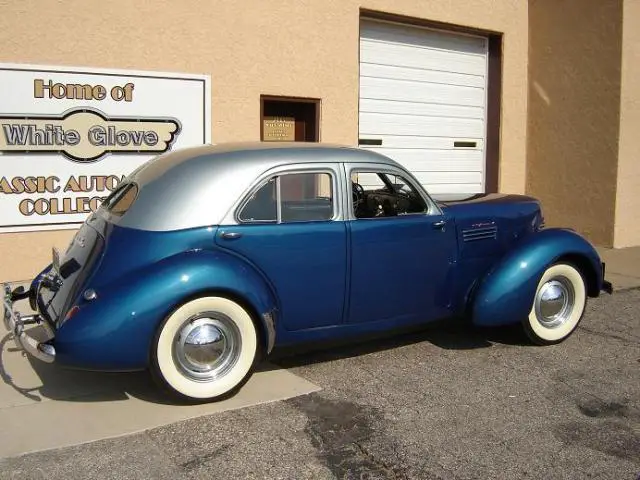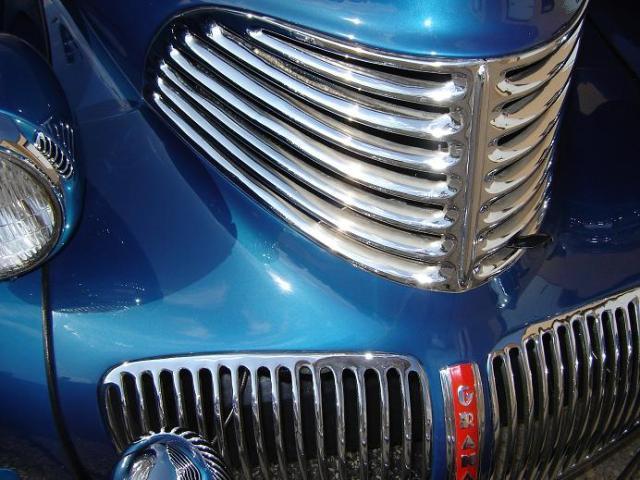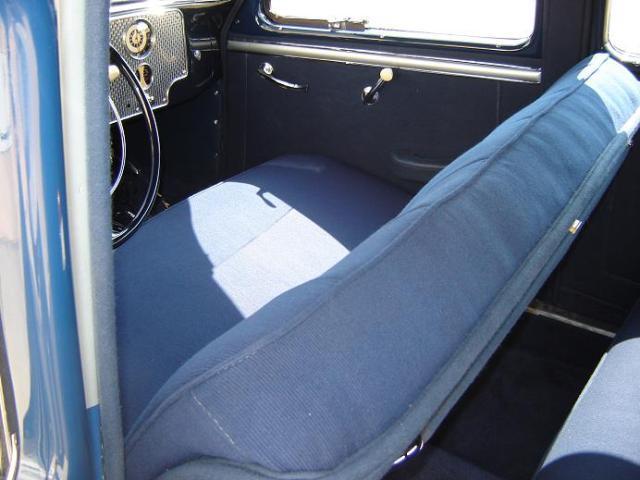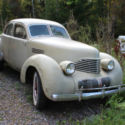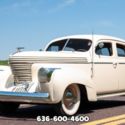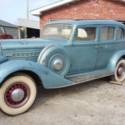1941 Graham Custom Hollywood - Model 113 Six-Cylinder Supercharged
| Make: | Other Makes |
| Model: | Custom Hollywood Model Model 113 Supercharged |
| Type: | Sedan |
| Year: | 1941 |
| VIN: | 000000000 |
| Color: | Blue |
| Engine: | Continental Six-Cylinder Supercharged |
| Cylinders: | 6 |
| Fuel: | Gasoline |
| Transmission: | Manual |
| Drive type: | RWD |
| Interior color: | Gray |
| Vehicle Title: | Clear |
| Item location: | La Crosse, Wisconsin, United States |
1941 Other Makes Custom Hollywood Model Model 113 Supercharged Additional Info:
1941 Graham Custom Hollywood
Model 113 Six-Cylinder Supercharged
One of the World's Finest Classics
White Glove Collection’s Custom Hollywood has had a complete ground-up restoration and has won 1st Place, Best of Show, and People’s Choice at the Graham Nationals.
We believe it to be the single best example of the model 113 in existence today.
History of the Custom Hollywood
The Great Depression was not kind to the Graham-Paige Motors Corporation and by 1939 its financial situation was desperate. Graham had spent $1 million developing its Spirit of Motion models for the 1938 production year, but sales were well below targets and 1939 was projected to end on an even lower note.
Joseph Graham had been approached the previous year by Norman de Vaux—a former GM factory manager and proprietor of the short-lived De Vaux-Hall Motors Corporation—with an interesting offer. De Vaux believed the public would be interested in a resurrected version of the 810 Cord, a nearly instant-classic designed by the legendary Gordon Buehrig. This second life for the Cord would be possible through use of the original 810 dies, jigs, tooling, and components which De Vaux had purchased at a steep discount from the Auburn Automobile Company’s creditors.
Initially, Graham turned down De Vaux’s offer, opting instead to continue with the Spirit of Motion designs. De Vaus had subsequently shopped his idea around to other manufacturers, landing at Hupmobile, who created its Skylark based on the Cord 810 dies.
But as 1939 was drawing to a close, Hupmobile was plagued with manufacturing problems stemming from the Cord’s complex dies—the roof alone consisted of 7 panels which required welding, leading, filing, and finishing—and other difficulties of mass producing a car that was designed for boutique customers. Yet the demand for the reimagined Buehrig design was there—Hupp had received 6,000 orders after debuting the Skylark at the 1939 New York Auto Show—and Hupp could find a way out of its own financial struggles if only it could meet this demand.
Seeing an opportunity, Joeseph Graham invited De Vaux to dinner at his home and struck a deal that he believed would save both Hupmobile and his own company. Graham-Paige would build the Skylark for Hupmobile, receiving a per-car manufacturing fee from Hupp. In exchange, Graham-Paige would receive full access to the Cord dies, jigs, tooling, and components it had previously turned down. Hupmobile, finding it had few other options, agreed to the deal.
Graham solved many of the manufacturing problems involved in the production of the Skylark—creating a one-piece roof die, for example—and also began work on its own Cord-based design, the Hollywood.
The Hollywood also earned the glamour associated with its named through its design. The Hollywood’s upper grillwork was chrome plated, drawing a stark contrast between the glitzy Graham and its plain-painted Hupp cousin. The Hollywood also featured three upright guards and a tubular cross assembly on the front and rear bumpers, whereas the Skylark featured only two guards and no cross assembly. Graham further differentiated the Hollywood by making it available in eight solid colors and four two-tone combinations.
But the most notable difference between the Skylark and the Graham was found under the hood. The supercharged Hollywood—which combined a six-cylinder engine cast by Continental Motors Corporation with a Graham-designed and built centrifugal, water-cooled supercharger—boasted an impressive 120 horsepower. This gave the Hollywood the highest power to weight ratio of any 1940 American-built automobile. This engine, combined with the car’s low center of gravity, gave it incredible handling, making it nearly as fast through turns as it was through straightaways.
Yet even demand for a car inspired by the great Gordon Buehrig could not save the Graham-Paige company. Production was shut down for ten days starting July 1st, 1940. When production resumed, it was to build the 1941 models, which were largely the same as the 1940 models, but featured an additional 4 horsepower, new color choices, and revisions to some of the hardware.
Production at Graham-Paige was permanently halted on September 3rd, 1940. Graham-Paige would never again produce an automobile under Joseph Graham’s leadership. Instead the company went on to build several vehicles for the war effort, and would then see its post-war history defined by mergers, acquisitions, and spin-offs. This left 1941 as the final year Graham-Paige existed as a truly independent American automobile manufacturer.
The two-toned silver and blue 1941 Graham Hollywood model 113 owned by White Glove Collection is one of only 350 built. This Graham is so rare it is the single lowest production Graham ever produced according to Michael E Keller, author of “The Graham Legacy” and past president of the Graham Owners Club International.
The model 113 was only produced as part of that brief 1941 model-year production run that lasted less than two months. But during that short time truly beautiful and powerful American motor car was produced.
Please call Cord Blomquist at 202-615-0600to discuss the terms of sale. All serious offers will be considered.


